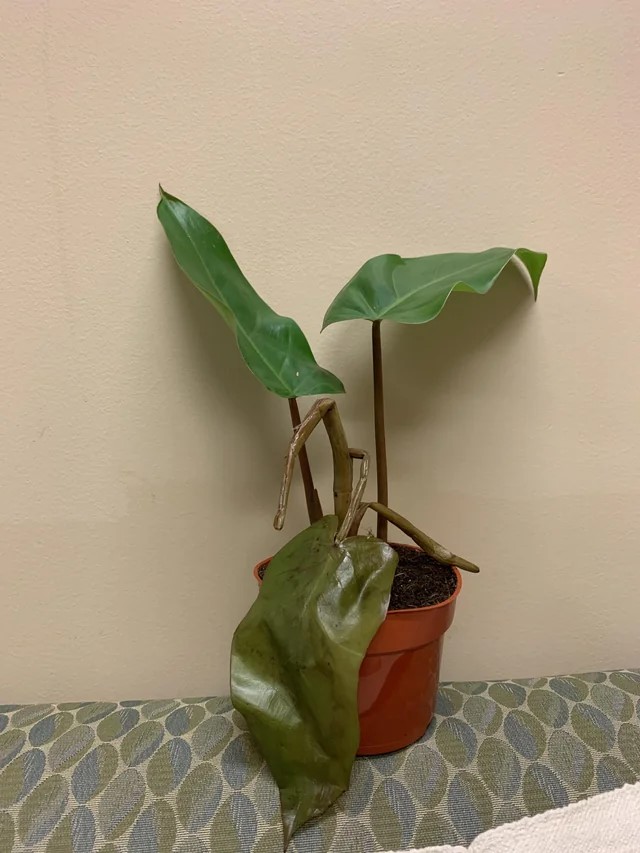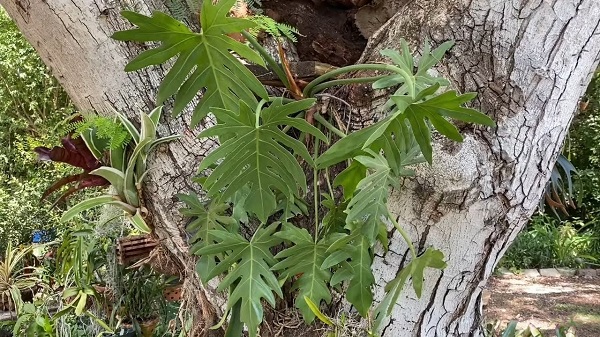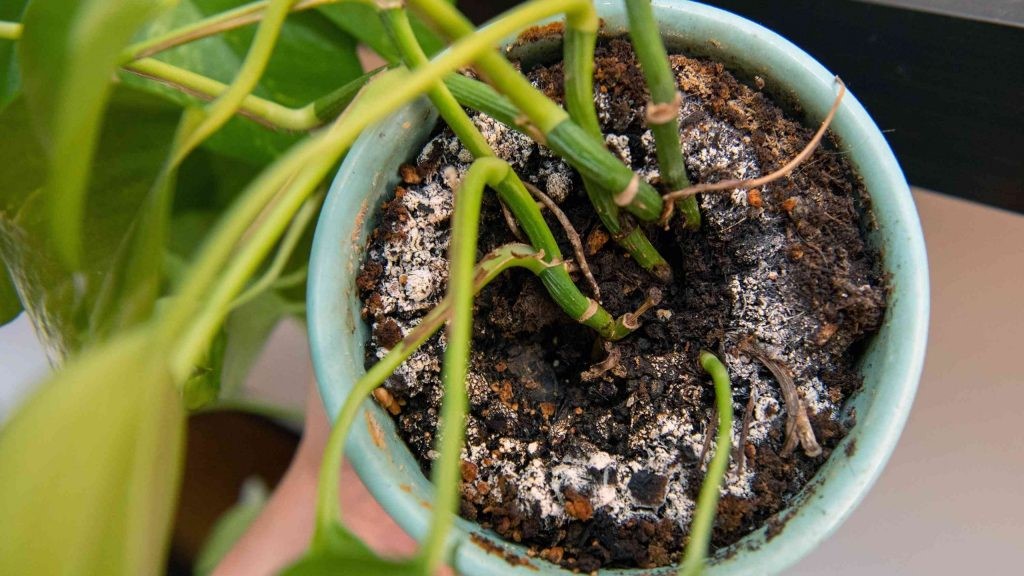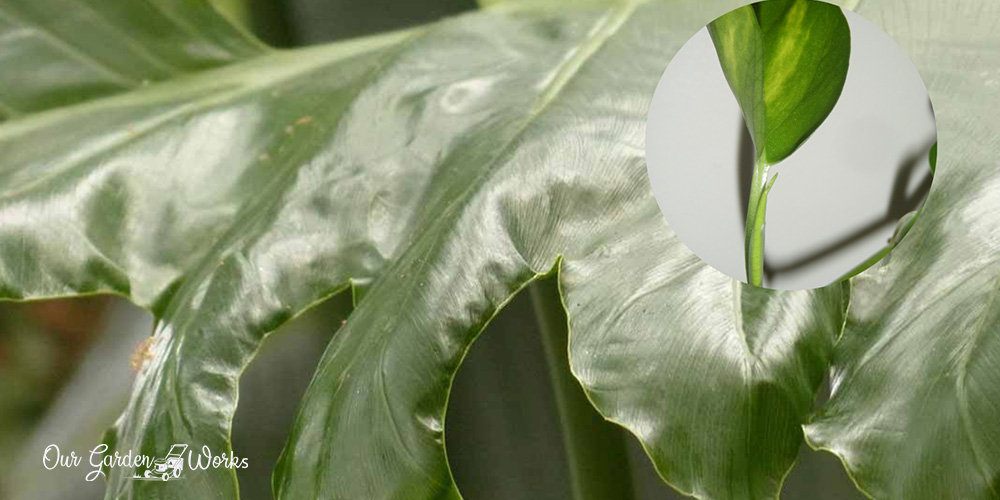Philodendrons are well-loved for being low-maintenance plants. However, they may occasionally be sick and stressed due to several possible causes. Philodendron leaves curling is often a sign of environmental stress that involves temperature, humidity, and watering issues.
Aside from environmental stress, improper growing practices, pest infestation, and fungal disease are also possible causes.
In this post, discover the signs to look for to diagnose the cause of philodendron leaves curling and how to treat it.
Why Philodendron Leaves Curl
Plants are inanimate living beings that have their own way of protecting themselves. Leaves are the respiratory system of philodendrons, which is responsible for gas exchange and moisture absorption.
According to a study, leaf curling is one of their ways of self preservation due to adjusting to the changes in external conditions.
Factors that trigger curling are as follows:
- The plant attempts to reduce the leaf surface when there’s too much sun or too cold. It’s like its way of covering itself against the sudden change in temperature or humidity.
- When it’s too dry, the leaves curl to preserve the moisture on the leaves and prevent further drying. Curling temporarily closes the stomata of the leaves and maintains its water reserves to prevent rapid dehydration.
- Sometimes, leaf curling is also part of natural process where the leaf has seen better days and prepares to dry up. It usually happens when a plant is developing new leaves throughout its growing cycle.
Usually, philodendron leaves curling is the first visible sign that the plant is under stress.
Long-time gardeners use it as an indication to properly identify what’s causing the problem and how they can save their plants. Without much experience in gardening, it can be hard to identify the problem.
Identifying what’s wrong with your philodendron is like dealing with pain. You know it is painful but there can be a lot of possible reasons that cause the pain.
Therefore, you look for signs to identify the problem so you can properly address it. This post will help you identify the condition that causes the leaf curl and how you can treat it.
10 Causes of Philodendron Leaves Curling
If only plants could talk, they can easily tell what’s wrong with them. However, as gardeners all we can do is look for signs of what might be the problem.
Check the signs for each condition below and save your Philos from further health decline.

#1 Temperature/ Cold stress
Philodendrons are tropical plants that’s highly dependent on warm climate and humidity. The moisture in the air is responsible for the plump and glossy surface of philodendron leaves.
Unlike other plants, epiphytes and philodendrons are capable of absorbing moisture through their leaves, which makes them more drought tolerant.
To better understand how the cold dries out philodendrons, it’s best to analyze how temperature is relevant to humidity.
Cold air holds less water since there’s less chance for the water to turn into vapor. Warm air, on the other hand, holds more water particles in the air causing an increase in humidity.
Philodendrons may tolerate occasional cold drafts but prolonged exposure to the cold can take a toll on the moisture absorption of the leaves and make them dry.
Signs of cold stress in philodendrons
- Philodendron leaves curling downward.
- Leaves dropping.
- Droopy or wilted leaves (extreme cold stress).
Aside from the signs mentioned above, it’s best to check the indoor temperature. The best temperature for indoor and outdoor philodendrons is between 50℉ to 90℉.
If it’s below those numbers, you’ll need to relocate your philos or adjust your HVAC system.
Tips to prevent cold stress in philodendrons
Other than those steps, here are some tips to prevent cold stress in your philos:
- Keep your philodendrons indoors as soon the temperature drops in fall and winter.
- Place your philos next to other plants indoors during winter since they help add humidity in the air around them.
- Keep your philos away from cold drafts and heat emitting appliances like radiators and fireplace.
- It’s okay to place a philodendron next to windows as long as the leaves are not touching the glass. Just remember to not open the windows next to it.
- Cold stressed philodendrons may benefit from the humid environment inside well-lit bathrooms.
- Keep a humidifIer ready in case of harsh winters.
Curly philodendron leaves can still recover as long as they have not dried thoroughly. However, some gardeners prefer to remove them for aesthetic purposes.
#2 Dry leaves due to excessive airflow

In their natural habitat, philodendrons are tucked under the trees which keeps them safe from strong winds and direct sun. Their delicate leaves are not equipped to withstand strong winds and can easily be torn and dried up.
Constant airflow robs the philodendron leaves of moisture from the air and causes them to dry out.
It’s best to remove them from areas close to heating or air conditioning units that produce constant airflow. In worst cases when there’s too much ventilation, you can mist them more frequently using an atomizer or install a humidifier.
#3 Drought stress
Aside from humidity and ventilation, curling philodendron leaves in an upward direction is the best indication of drought stress.
Philodendrons are prone to root rot that’s why some gardeners seldomly water them, causing underwatering issues and drought stress.
4 factors that contribute to watering issues in philodendrons are as follows:
(1) Soil drainage: Too much soil retaining materials and store too much water in the soil and cause root rot.
On the other hand, if the soil materials have no enough moisture-retaining materials, the roots will fail to have enough time to absorb water.
The ideal soil mix of materials for philodendrons are as follows: (You may adjust the measurements based on the size of your philodendrons)
Soil mix: Option 1
- 1 cup peat moss.
- 1 cup orchid bark.
- 1 cup potting mix.
- ¼ cup perlite.
Soil mix: Option 2
- Orchid bark (25%).
- Coconut coir (20%).
- Perlite (25%).
- Activated charcoal (10%).
- Worm castings (10%).
(2) Watering frequency: The amount of water and the frequency of watering should be based on the climate and sun exposure of philodendrons.
In optimal conditions, they should be watered every 1 to 2 weeks. However, you should increase their water intake if it’s warm and humid while decreasing the amount and frequency when it’s cold and winter.
(3) Sun exposure: If the weather is on the colder side and the philodendron is not exposed to sunlight, the watering should be kept at a minimum to avoid overwatering issues.
If the weather is hot and your philos is receiving bright indirect light all day long, you may increase watering weekly or increase your misting routine.
(4) Pot size: If a small philodendron is planted in a big pot, the soil can handle too much water that’s more than the roots can absorb.
Meanwhile, if the pot is too small for the plant, the roots will immediately take up the water, dry up the soil fast, and lead to drought stress.
Oftentimes, philodendrons in small pots can experience root bound. The tell tale sign that it’s time to re-pot your philodendrons is when the soil dries up too fast than usual.
#4 Salt & mineral buildup

Sometimes the growing conditions for philodendrons are on the spot but the quality of the water is causing the problem. Philos and epiphytic plants are more attuned to rainwater which has a more acidic quality and low mineral content.
Some areas have tap water that is too alkaline which can cause mineral buildup in the soil. This in turn may cause chemical burns on the root level. This in turn may cause leaf curling and browning of the leaf tips that same way it occurs in spider plants.
If your tap water is too alkaline or contains too much fluoride, it’s best to use filtered water in watering your plants.
If you have extra time, you may treat alkaline or fluoride water overnight to make it suitable for watering your philodendrons and other houseplants.
How to treat alkaline or fluoride water
- Collect tap water in a pail.
- Let the water sit in the container overnight. The minerals will eventually evaporate and other impurities will settle at the bottom of the container.
- Use the treated water for watering the next day.
If you feel like the soil of your philodendron has too much salt buildup, leach them by placing the pot under running water for 10 to 20 minutes.
The running water will dissolve the salts and let it drain. Once done let the soil drain the excess water before placing it back on its location.
#5 Low indoor humidity
Philodendron leaves get too dry when the indoor humidity falls below 60%. Without enough humidity, they won’t be able to sustain the moisture demand of the leaves to maintain their plump and shiny texture.
Here are some of the ways to improve indoor humidity:
- Let your damp clothes air dry indoors.
- Add more houseplants next to your philodendrons.
- Place a pebble tray around your houseplants.
- Use a humidifier to improve indoor air quality.
- Place dry and drought stressed plants in the bathroom.
Other possible causes of philodendron leaf curl
The following conditions are less likely to cause philodendron leaves to curl. However, when the plant reaches extreme stress, curling of leaves may occur along with other obvious signs of damage:
(6) Overfertilization: When leaves curl downward, develop brown spots, and drop green leaves, there’s a high chance that there’s root burn due to excessive chemicals from fertilizers.
To treat over-fertilized philos, you may remove the visible salt buildup in the soil or leach the salts by placing the pot under running water.
(7) Overwatering and root rot: Philodendrons are prone to root rot wherein the roots turn mushy. Since the roots are already rotten, they are already incapable of absorbing nutrients in the soil, which leads to nutrient deficiency that shows as:
- Smelly roots.
- Molds on the soil.
- Mushy and black or brown roots.
- Curling and yellowing of leaves.
(8) Lack of sunlight: Philodendrons need dappled sunlight. Without it, they won’t have enough energy to perform optimal photosynthesis.
So, placing them in dark areas of your home can take a toll on their leaf development and maintenance. Usually, light-deprived philodendrons have stunted growth and smaller leaf size.
(9) Fungal disease: Philodendrons rarely get fungal disease, but when they do, they often get infected with powdery mildew. It is usually caused by cool and humid conditions which allows the fungus to thrive.
Indications of powdery mildew on philodendrons is the development of white patches on the leaf surface. When the infection gets more severe, the leaves will start to yellow, curl, and die.
(10) Sap-sucking insects: Healthy philodendrons can easily ward off mild pest infestation.
Once they get stressed, sap-sucking insects like mealybugs and spider mites can take advantage of their resistance. Deformed, curly, and yellowing leaves are the damage that philos endure with moderate to heavy pest infestation.
Both fungal diseases and pest infestation can be treated with neem oil. Though treatment for such conditions are possible, the best course of action is always on prevention.
Add pest and disease prevention measures on your plant care routine to keep your philodendrons healthy and happy.
Tips in growing healthy philodendrons
- Water philodendrons once a week or depending on the climate. Always let the topsoil dry thoroughly before watering again.
- Prune and remove dead leaves not only to improve the aesthetics of the plant but also to boost its growth and preserve its energy.
- Wipe the dust on the surface of the leaves to improve optimal sun exposure.
- Check the underside of the leaves for pests and molds.
- Fertilize your plants monthly with nitrogen-rich fertilizer.
- Re-pot philodendrons based on their size to avoid root bound and drought stress.
Final Thoughts
Philodendron leaves curling is mostly due to humidity and watering issues. However, it’s not limited to those conditions and can be a sign of other underlying plant conditions like overwatering of pest infestation. We hope this post helped you pinpoint the cause of your philodendron’s curly leaves.
How do you keep your philodendrons happy? Let us know in the comments below and let other growers learn from your practice.
Also, please don’t forget to share this post with your friends and let them easily find the root cause of the curly leaves.
